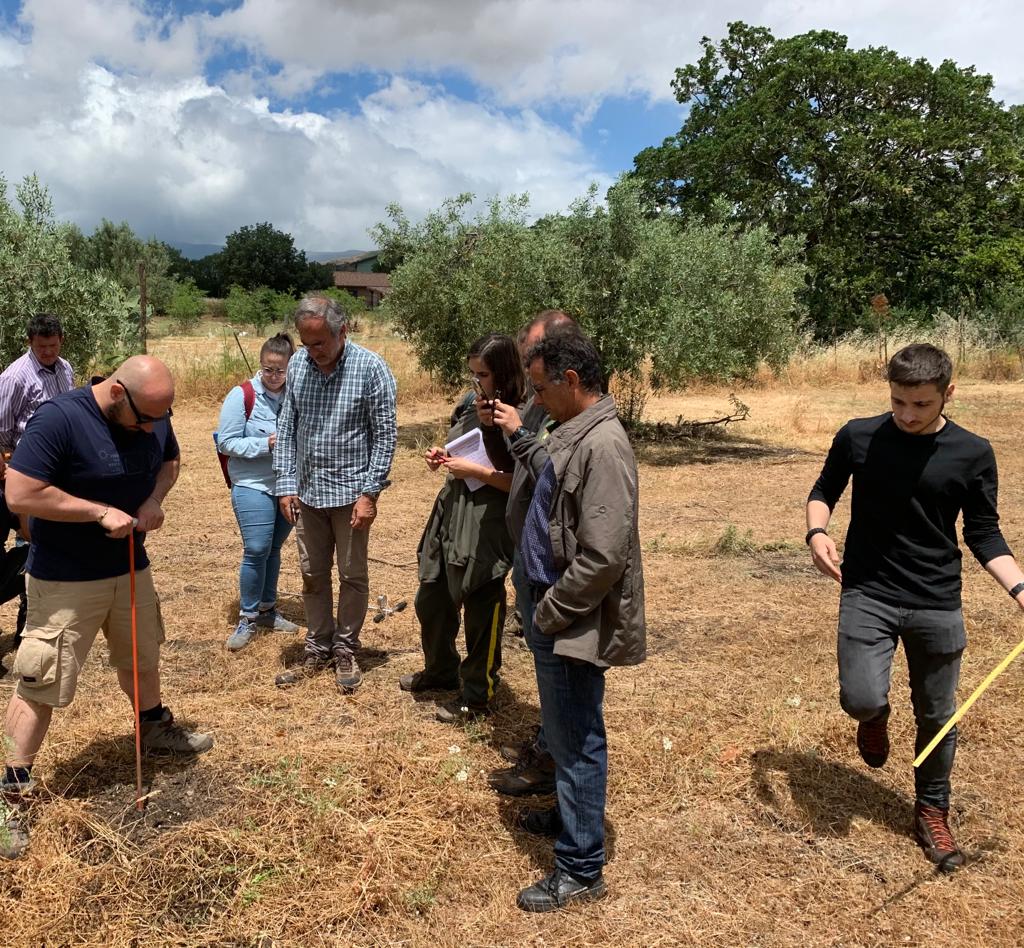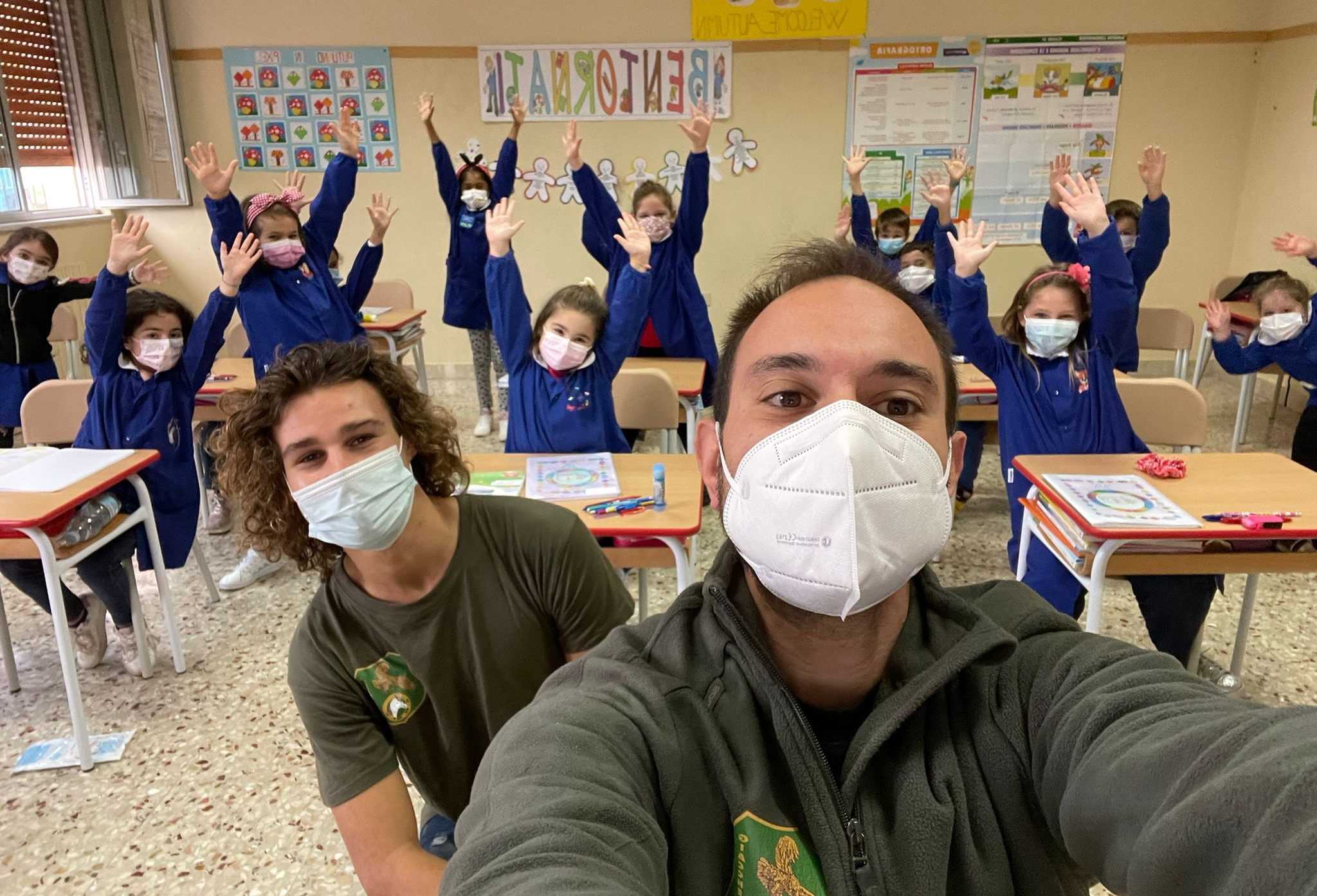
Further Information
The research takes place in three different fields near Bronte: An organic olive grove, a traditional organic olive-pistachio grove and an intensively cultivated almond-pistachio grove. The last two directly border each other and are well suited for a comparison of soil attributes and soil biodiversity between organic cultivation and pesticide and artificial fertiliser use. Already in the winter semester 21/22, we conducted a comparative arthropoda study here with interns.
Prof. Paolo Guarnaccia (second from left) from the University of Catania and his students took vertical soil samples for lab analysis of porosity, CO2-oxygen respiration and other factors.
Students and volunteers placed a metal ring in the ground, covered with foil, to distribute a certain amount of water evenly in the ring by quickly pulling away the foil. The time during which the water percolates into the earth gives clues about the soil’s porosity and compression.

Surrounded by volunteers Dr. Andrea Zimone (left) took topsoil samples for analyzing the soil biological quality, based on microarthropods.
Prof. Domenico Longo (above) measured the soil respiration. The lower part of his self made CO2 accumulation chamber is an empty cylinder, which is open above the ground. The upper part contains the electronics which are able to measure the rise of CO2 concentration from the ground, starting with the amount equal to the surrounding air (400 ppm). The soil releases CO2 from the microbial respiration – the faster the graph rises, the more microorganisms are present. The device also measures temperature, humidity and pressure.
The analysis will continue regularly.






